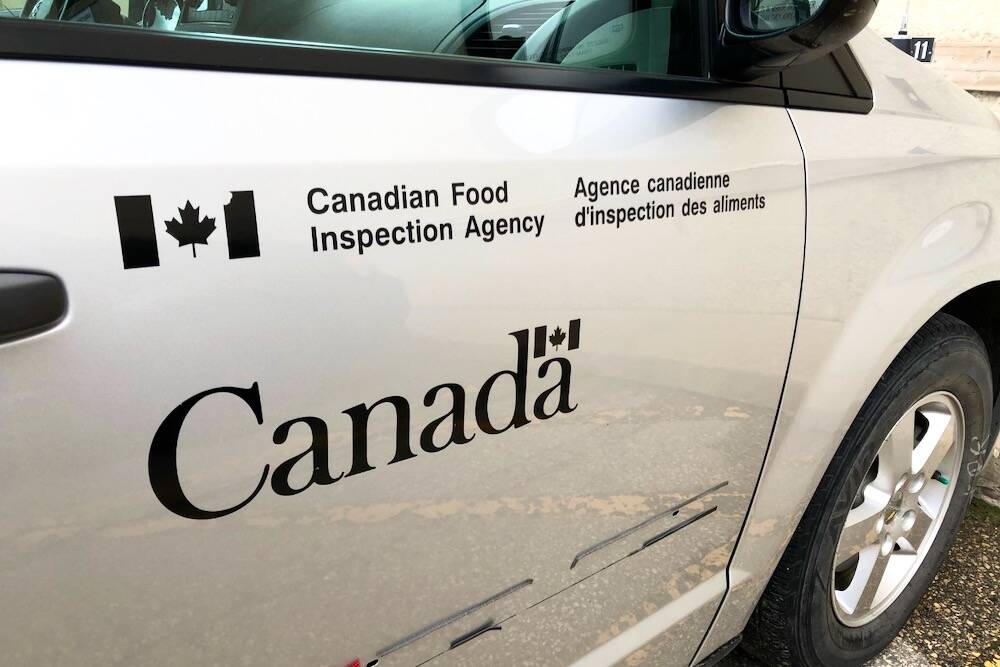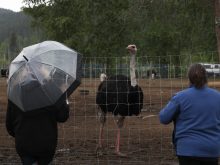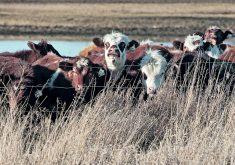The level of drought in parts of Western Canada so far this year has given the federal government a head start in drafting its list of jurisdictions where producers can get in on the livestock tax deferral provision.
Agriculture Minister Lawrence MacAulay on Monday announced an initial list of designated regions for the provision for the 2023 tax year, including major chunks of Alberta and British Columbia and much of western Saskatchewan and south-central Manitoba.
The list so far includes 96 municipalities and other jurisdictions in Saskatchewan, 62 in B.C., 56 in Alberta and 19 in Manitoba.
Read Also

B.C. ostriches culled, CFIA confirms
Ostriches on an embattled Edgewood, B.C. farm have been culled after a prolonged legal battle, the Canadian Food Inspection Agency has confirmed.
A preliminary list of prescribed drought and flood regions for a given tax year is usually ready in the early fall of that year, the government said, so making these designations earlier “helps provide assurance for producers as they make difficult herd management decisions.”
As usual, the government said it will continue to monitor conditions across the country and will add other regions throughout the year “if they meet the criteria.” The full list for a given tax year is usually set out in December, when forage yield data for the year are finalized.
Criteria for the deferral include forage yields of less than 50 per cent of the long-term average, whether caused by drought or excess moisture. Eligible regions are identified based on weather, climate and production data, in consultation with industry and provinces.
In areas designated for deferral in a given tax year, eligible producers who had to cull breeding herds by at least 15 per cent may defer part of the income from those sales until their next non-designated tax year.
If the herd is cut by at least 15 per cent — but by less than 30 per cent — then 30 per cent of income from net sales can be deferred.
Where a producer reduces a breeding herd by 30 per cent or more, 90 per cent of income from net sales can be deferred.
Thus, in the 2024 tax year — or in the next tax year in which the designation is lifted off a specific municipality — the deferred taxable income from those sales can be at least partially offset by the cost of reacquiring breeding animals, which works out to a reduced tax burden connected to the original sale.
The government said Monday it “recognizes the significant challenges livestock producers in Western Canada are facing due to exceptionally dry conditions. Compounded by subsequent years of drought, pastures and forage production are significantly impacted, leading to low feed supplies for livestock.”
“My heart goes out to farmers and ranchers who are affected by these extreme weather conditions,” MacAulay said in Monday’s release. Along with the deferral provision, he said, “we have also enhanced support available under (business risk management) programs and we will continue to work closely with provinces to get producers the additional support they need as quickly as possible.”
For example, the government said, it’s “worked quickly” with the B.C., Alberta and Saskatchewan governments on joint AgriRecovery assessments and work is “urgently progressing” to finalize the AgriRecovery process, as well as to sort out any additional supports required to cover producers’ “extraordinary costs.”
As for other supports already in place, the federal government said Monday it has already cleared requests from B.C. and Alberta for late participation in AgriStability, as well as requests from B.C. and Saskatchewan to increase the interim payment rate under AgriStability to 75 per cent, up from 50.
MacAulay also noted one-year adjustments to federal-provincial AgriInsurance programs to make more drought-damaged crops available for feed in Alberta, Saskatchewan and B.C. — Glacier FarmMedia Network














